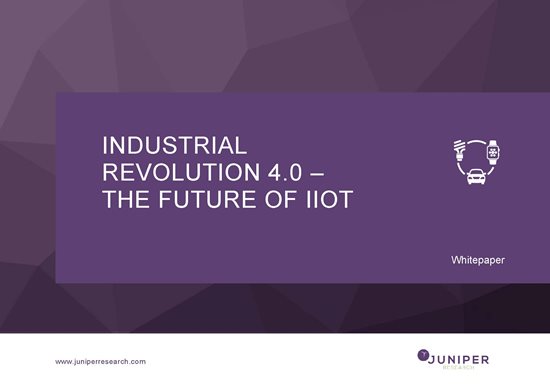Our complimentary whitepaper, Industrial Revolution 4.0 – The Future of IIoT, provides insight into the growth of the Industrial IoT, alongside an analysis of key technologies. Also included are forecasts for the total number of Industrial IoT connections in use by 2025.
- Industrial IoT
- Role of Cellular Technologies in Industrial IoT
- LPWA (Low-Power-Wide-Access) Networks
- Market Forecast Summary
Excerpt from Whitepaper:
1.1 Industrial IoT
Industrial IoT (Industrial Internet of Things) refers to the application of IoT technology in industrial sectors. With a focus on M2M (machine-to[1]machine) communication and machine learning, Industrial IoT enables corporations to improve efficiency and reliability of key operations; leading to reduced costs and a minimisation of unplanned downtime. Key sectors served by the Industrial IoT include agriculture, energy and utilities, logistics, manufacturing, mining, and oil and gas. Enterprises in the Industrial IoT ecosystem must ensure that they implement the most applicable connectivity technologies, based on the size, scope and range of operations. If an inappropriate, or less appropriate, technology is introduced, businesses risk running a substandard operation; resulting in reduced efficiency and elevated costs. Fragmentation has always been a problem for the IoT. As IoT solutions can, and do, use different wireless network protocols like Wi-Fi, LoRa, Zigbee, Bluetooth or 5G, this shows the fragmentation at a very basic level. Each of these network types has specific characteristics optimised for different use cases, which poses the risk for significant financial and time costs for connecting solutions from different communication protocols.
1.1.1 Role of Cellular Technologies in Industrial IoT
i. 3G
The most common use for 3G cellular technologies within IoT is the intermittent transition of small quantities of data. Juniper Research suggests that, as the pricing difference between 3G and 4G is now practically non-existent, operators should look towards migrating 3G IoT connections to 4G.
To read more click ‘DOWNLOAD’ above.




















